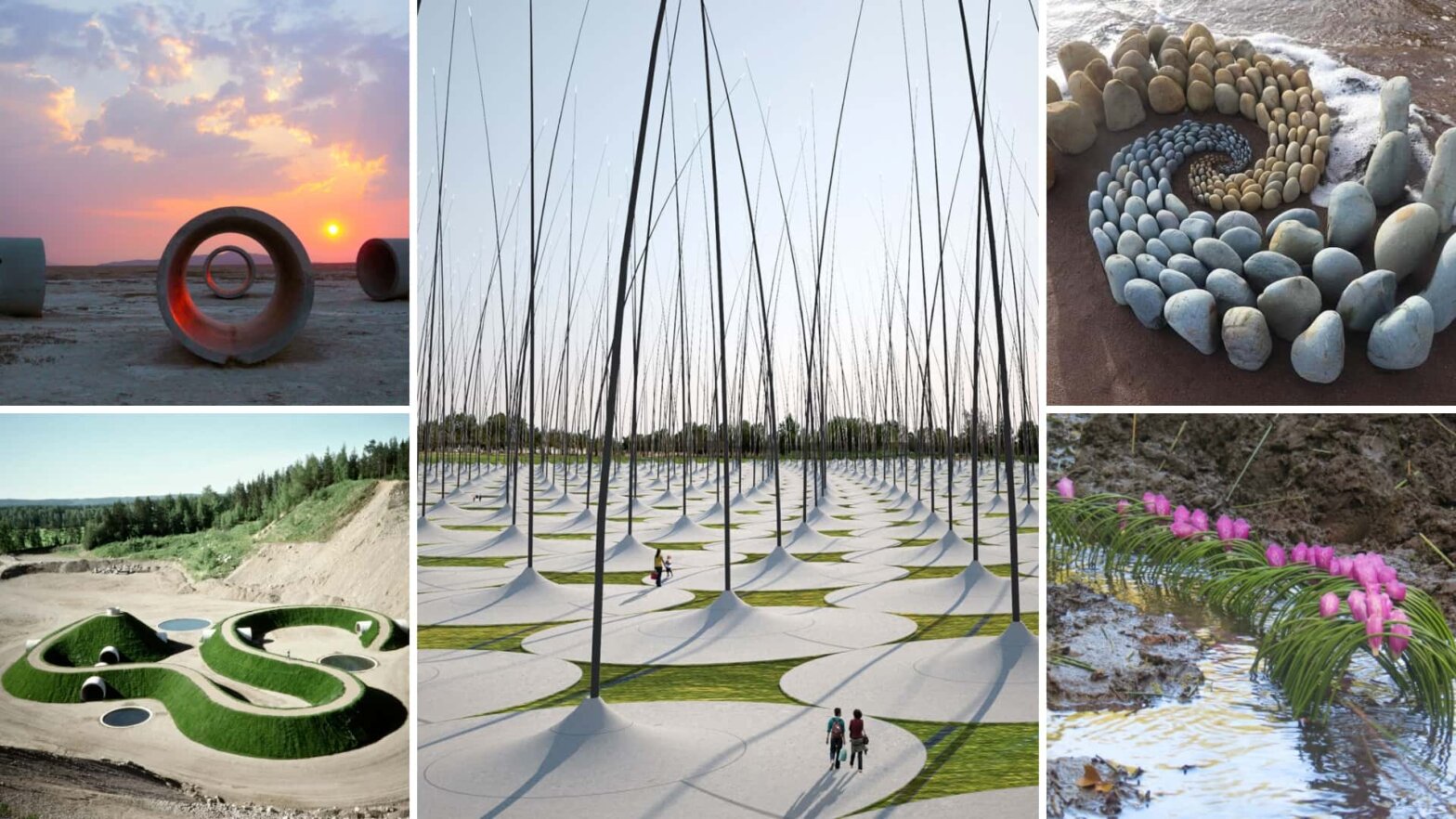What is land art? In this post, we’ll be providing a definition and overview of this artistic movement, then digging into the history of the style and taking a look at some of the most prominent voices and important pieces in this expansive medium. First up, let’s get started with a comprehensive definition.
What is Land Art
Let’s define land art
Land art is one of many artistic styles and movements worth familiarizing yourself with. Check out our art styles index to learn all about them.
LAND ART DEFINITION
What is land art?
Land art is artwork that is composed directly on or in the natural landscape. Land art is also known as “earth art” and “earthworks.” Land art can vary widely in scale from tiny sculptures to huge, expansive pieces that cross entire fields, incorporate entire lakes, or cover entire rock formations. Natural elements like rocks, sticks, and foliage are often used, but man-made elements may also be incorporated as long as the artwork is located on and incorporates the natural landscape in some way. The majority of land art is sculpture based, though some earthworks artists incorporate elements of painting, carving, or performance. Some artists even go as far as to incorporate demolition with dynamite into their land art practices.
Land Art Characteristics:
- Incorporates the landscape
- Ranges greatly in size/scale
- Characteristics, examples, etc.
- Blends natural and man-made elements
History of Earthworks
The roots of land art
Culturally, land-art-esque works have existed around the world for centuries, but land-art as an officially recognized artistic movement began in the late 1960s and remained popular into the 1970s.
Here's a quick explainer video to give you an overview.
What is Land Art • Earthwork art definition
The land art movement is rooted most strongly in the United States, especially in the deserts of the west. Earthworks also proved remarkably popular in England. Artists in other countries around the world have also dabbled in earth art, but the US and the UK are considered the two most prominent hubs for this particular artistic discipline.
In this video, a case is made for why this particular art form is valuable.
PBS makes a case for land art • Earth art
The earthworks medium was developed in part as an escape from the commercialization and commodification of art at the time. By building their art directly into the landscape, the earthworks artists were preventing the capitalist powers that be from turning their art into mass-produced trinkets.
The movement was also seen as a way for the artist to get closer to nature in a liberating way and, sometimes, as a way to raise awareness about environmental issues.
Famous Earthworks
Landmark land art examples
Let’s take a look at some of the most well known land art examples. We’ll dive into the artists behind them and a little bit about how each piece was made.
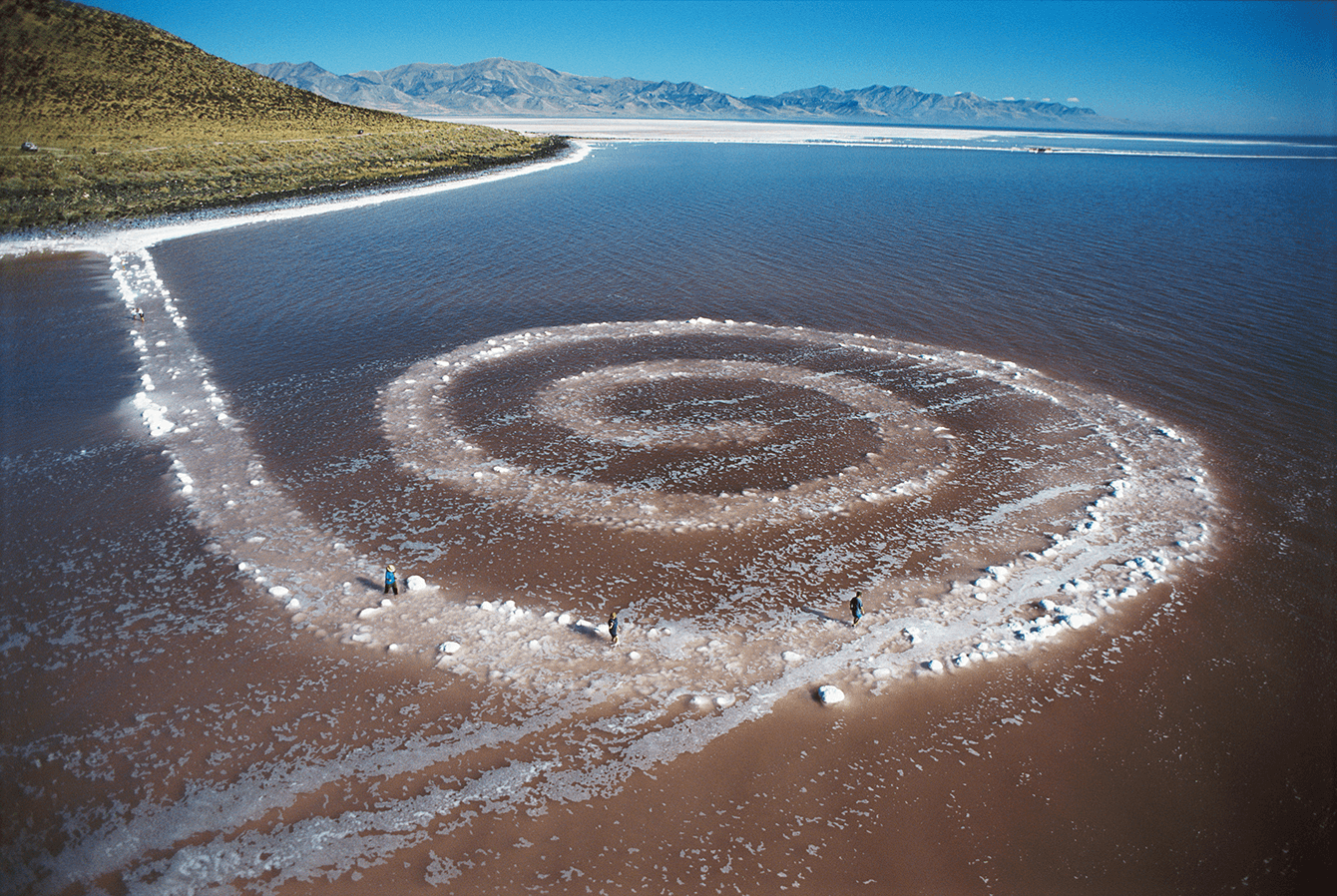
Spiral Jetty by Robert Smithson
Spiral Jetty is one of the most famous examples of land art if not the most famous earthwork in existence. This 100% natural creation is located in the Great Salt Lake of Utah and was made from basalt, colored salt crystals, and mud, all sourced directly from the lake itself. Robert Smithson is one of the most important names in the land art movement, and Spiral Jetty is his most famous work. Smithson refers to the piece as a work of abstract geology.
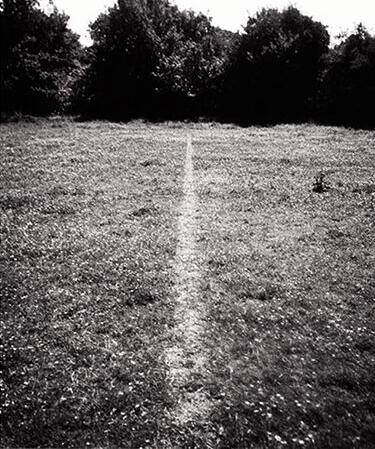
A Line Made by Walking by Richard Long • Earth artwork
This rather simple piece of art is titled A Line Made by Walking. It was made in the UK by artist Richard Long, who created the artwork just as the name implies: by walking across the same line over and over again.
The temporary nature of the piece and the visualized impact of man on the natural world contributed to this earthwork being hailed as one of the first great pieces of the new land art movement.
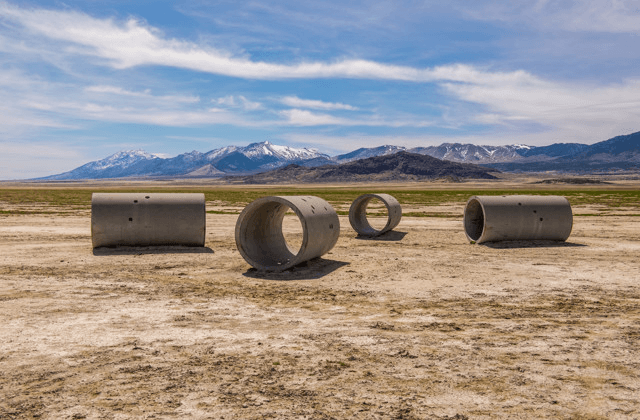
Sun Tunnels by Nancy Holt • What is Land Art
This piece located in the Utah desert is called Sun Tunnels and was created by land artist Nancy Holt. This is a key example of man-made elements contributing to an earthwork in a meaningful way.
To fully experience this piece of art, viewers are required to visit in person, step inside the concrete cylinders, and look out at the natural world through the various gaps in the concrete.
These Sun Tunnels can be visited at any time of year but were specially designed to present stunning views of the sunrises and sunsets of the winter and summer solstices.
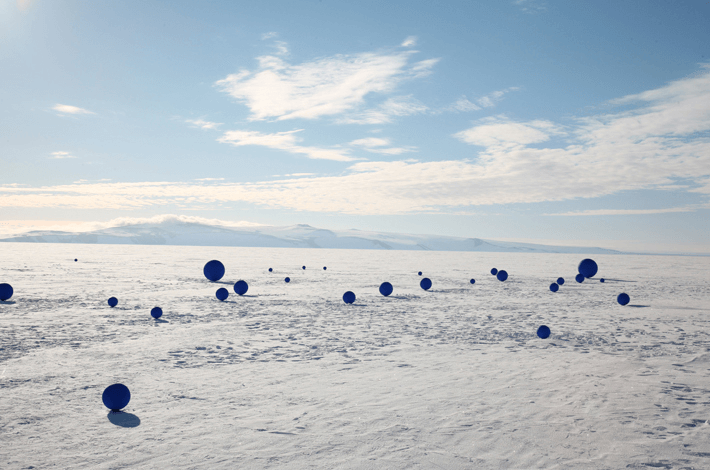
Stellar Axis by Lita Albuquerque • Land art movement
Stellar Axis was the first earthwork created for the landscape of Antarctica. Artist Lita Albuquerque, along with a team of experts and researchers, went on an expedition to Antarctica solely to create this land art.
The piece was partially funded by the National Science Foundation and took years of coordination and planning. The 99 blue spheres that comprise Stellar Axis each correlate to a star in the sky above. The piece was intended as a cosmic reminder of the past and future as the earth continues to spin, and the spheres no longer align with their corresponding stars.
UP NEXT
What is Kinetic Art?
You now know everything you need to know about land art. But, land art is just one of the many artistic movements and styles worth learning about. Continue your artistic education by learning about another interesting style that blends mediums and requires interaction to fully experience. Learn all about kinetic artwork, up next.
Up Next: Kinetic Art Explained →
Showcase your vision with elegant shot lists and storyboards.
Create robust and customizable shot lists. Upload images to make storyboards and slideshows.
